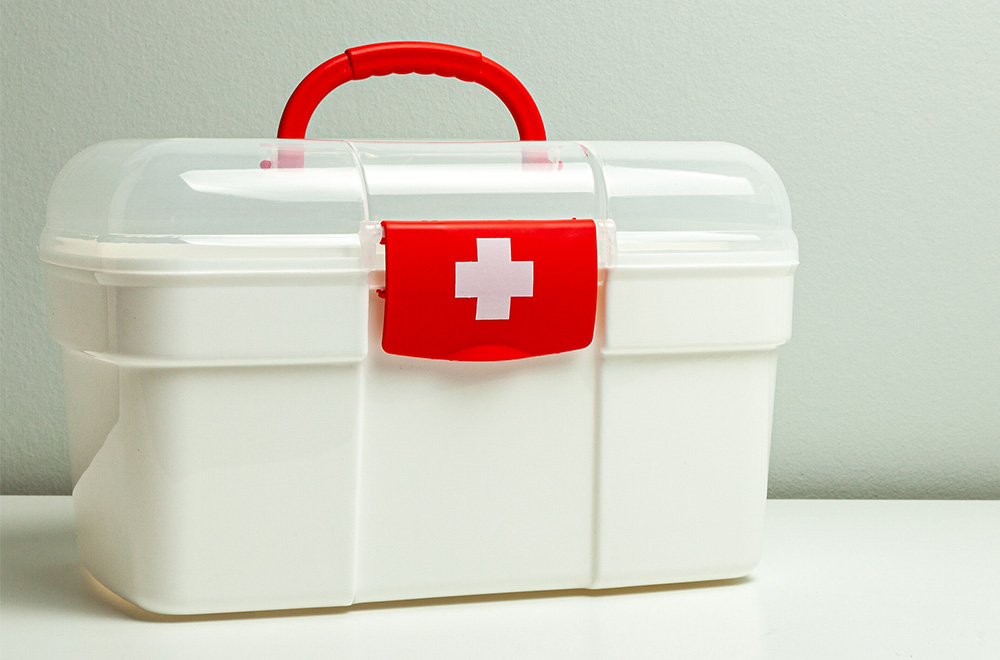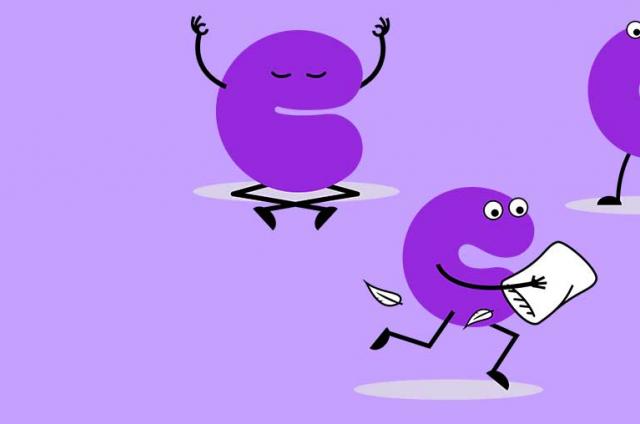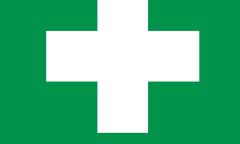First aid for epileptic seizures
Knowing how to help someone during and after a seizure may mean you feel more confident if a seizure happens.
How you can best help someone depends on the type of seizure they have and what happens to them when they have a seizure.
This information gives some simple steps on how to help during and after a seizure. If it is someone you know, they may have told you how you can help them, or you might like to ask them what they would like you to do.
We have a first aid card which summarises how you can help someone in a seizure. Call our helpline on 0300 102 0024 or email helpline@epilepsysociety.org.uk for a first aid card to be posted to you. Or you can download and print a copy here.
If it is someone you don’t know, or you don’t know about their epilepsy, follow our basic first aid message: Calm, Cushion, Call (CCC).
Are all seizures the same?
There are different types of epileptic seizures. How a seizure affects one person might be different from how it affects someone else.
- Some people have seizures while they are awake (‘awake’ seizures). Some have seizures while they are asleep (‘asleep’ or ‘nocturnal’ seizures). These names do not describe the type of seizure, just when they happen.
- Some people have more than one type of seizure.
- Most seizures happen suddenly and without warning, last a short time (seconds or minutes), and stop by themselves.
- Although people can be injured during a seizure, most people don’t hurt themselves and don’t usually need to go to hospital or see a doctor. See below for when to call for an ambulance.
- There are different types of seizure: and details are below.
The following information describes different types of seizures and what you can do to help.
Focal seizures
Focal seizures start in, and affect, part of the brain: either a large part or just one small area. What happens during the seizure depends on where in the brain the seizure happens and what that part of the brain normally does.
Focal preserved consciousness seizures (FPC)
During a focal preserved consciousness seizure the person is conscious (aware and alert) and usually knows that the seizure is happening. This seizure could be an unusual smell or taste, a twitching of an arm or hand, a strange ‘rising’ feeling in the stomach, or a sudden feeling of intense joy or fear.
How to help
- As the person might feel strange or be upset, reassuring them might be helpful.
Focal impaired consciousness seizures (FIC)
Focal impaired consciousness seizures affect more of the brain than focal preserved consciousness seizures. The person’s consciousness is affected, and they may be confused and not know what they are doing. They may wander around, behave strangely, pick up objects, or make chewing movements with their mouth. Afterwards they may be confused for a while, or need to sleep. These seizures can last a few seconds or a few minutes.
How to help
- Do not restrain the person as this might upset or confuse them.
- Gently guide them away from any danger, for example from walking into the road.
- Speak gently and calmly as they may be confused. If you speak loudly or grab them, they might not understand and may get upset or respond in an aggressive way.
After the seizure
- They may feel tired and want to sleep. It might be helpful to remind them of where they are.
- Stay with them until they fully recover and can safely return to what they had been doing before the seizure.
- Some people recover quickly, but others may take longer to feel back to normal again.
Focal to bilateral tonic clonic seizures
Sometimes focal seizures spread from one side to both sides of the brain. This is called a focal to bilateral tonic clonic seizure. Some people call the focal seizure an ‘aura’ or ‘warning’, as it warns them that a tonic clonic seizure may follow (see below).
How to help
- If you or the person is aware of the warning, they may need help to get to a safe place before the tonic clonic seizure happens.
Generalised seizures
Generalised seizures affect both sides of the brain at once and happen without warning. The person usually becomes unconscious and will not remember the seizure afterwards.
Absence seizures
During an absence seizure the person becomes unconscious for a short time. They may look blank and stare and will not respond to what is happening around them. If they are walking, they may carry on walking but will not be aware of what they are doing.
How to help
- Stay with the person, and gently guide them away from any danger.
Tonic and atonic seizures
In a tonic seizure the person’s muscles suddenly become stiff. If they are standing, they often fall, usually backwards, and may injure the back of their head.
In an atonic seizure (or ‘drop attack’) the person’s muscles suddenly relax and become floppy. If they are standing, they often fall, usually forwards, and may injure their head or face.
Both seizures are brief and happen without warning. Most people usually recover quickly.
How to help
- Reassuring them may be helpful. If they are injured, they may need medical help.
Myoclonic seizures
Myoclonic means ‘muscle jerk’, and these seizures involve jerking of a limb or part of a limb. They often happen shortly after waking up, are brief, and can happen in clusters (many happening close together in time).
How to help
- You don’t need to do anything to help during the seizure other than make sure that the person has not hurt themselves.
Tonic clonic and clonic
During a tonic clonic seizure the person goes stiff (‘tonic’ phase), usually falls to the ground, and shakes or has jerking movements (‘clonic’ phase). Their breathing may be affected, and they may go pale or blue, particularly around their mouth. They may also bite their tongue or cheek.
Some people have clonic seizures without going stiff to start with. Although it can be frightening to see, this is not usually a medical emergency. Usually, once the movements have stopped, the person recovers and their breathing goes back to normal.
How to help
- Try to stay calm.
- Check the time to see how long the seizure lasts (see below for why this is important).
- Only move the person if they are in a dangerous place, for example in the road. Instead, move any objects (such as furniture) away from them so they don’t hurt themselves.
- Put something soft (such as a jumper) under their head, or cup their head in your hands, to stop it hitting the ground.
- Look for medical jewellery or an ID card for information about what to do.
- Do not hold them down – allow the seizure to happen.
- Do not put anything in their mouth – they will not swallow their tongue.
- Try to stop other people crowding around.
After the seizure
- Gently roll them on to their side into the recovery position (see below).
- If their breathing sounds difficult or noisy, gently open their mouth to check that nothing is blocking their airway.
- Wipe away any spit from their mouth.
- Try to minimise any embarrassment. If they have wet themselves, deal with this as privately as possible (for example, put a coat over them).
- Stay with them until they have completely recovered. They may need gentle reassurance.
- Do not give them anything to eat or drink until you are sure that they have fully recovered.
When to call an ambulance
Usually, when a person has a seizure, there is no need to call 999 for an ambulance. However, always do call an ambulance if:
- you know it is the person’s first seizure
- they have injured themselves badly
- they have trouble breathing after the seizure has stopped
- one seizure immediately follows another with no recovery in between
- the seizure lasts two minutes longer than is usual for them, or
- you do not know how long their seizures last.
For someone you do not know, follow our basic first aid message: Calm, Cushion, Call.
Some people recover quickly from a tonic clonic seizure, but often they will be very tired, want to sleep, and may not feel back to normal for several hours or sometimes days.
Status epilepticus
A person’s seizures usually last the same length of time each time they happen and stop by themselves. However, sometimes seizures do not stop, or one follows another without the person recovering in-between.
If this goes on for five minutes or more, it is called ‘status epilepticus’, or ‘status’. Status is not common, but can happen in any type of seizure and the person may need to see a doctor. Status in a tonic clonic seizure is a medical emergency and the person will need urgent medical help. Status can cause brain damage or even death. It is important to call for an ambulance. See above for when to call an ambulance.
Some people are prescribed emergency medication, either buccal midazolam or rectal diazepam, to stop their seizures.
Carers need training in giving emergency medication. It is important for the person to have their own written protocol (plan) about when to give it, for the carer to follow.
Epilepsy Society provides training on epilepsy awareness and the procedure for how to administer emergency medication. For more information on our training, call 01494 601438, or email es.training@epilepsysociety.org.uk
Seizures and dental injuries
Although most people do not usually hurt themselves during a seizure, sometimes seizures can cause injuries. If someone falls in a seizure, they may loosen or crack a tooth and will probably need to see a dentist quickly so the tooth can be repositioned or repaired.
If someone knocks out a tooth, and you feel confident to help, some quick action may mean that the tooth can be saved and replaced. Only do this if the person is otherwise well enough after the seizure.
How to help
- Try to find the tooth. Pick it up by the crown, and do not touch the root.
- If the tooth is dirty, clean it by rinsing it in milk or running it under water. Do not scrub it.
- Put the tooth back into the socket as quickly as possible.
- Ask the person to bite down on a clean tissue or handkerchief to keep the tooth in place. The person should see a dentist as soon as possible.
- If you are not able to put the tooth back in its socket, try to keep it wet, if possible by putting it in some milk.
There is more information on the NHS website.
If someone uses a wheelchair
Usually, a person with epilepsy will have a care plan. The care plan will advise how to help the person if they use a wheelchair and have a seizure, and how to help once the seizure has stopped.
If you can’t find the care plan, here is some general information about what to do if someone has a seizure while using their wheelchair.
How to help
- Put the wheelchair brakes on.
- Do not try to restrain them or put anything in their mouth.
- Do not try to move them, unless their care plan says to do so. Moving them could cause injury to either you, or the person having the seizure.
- Let them stay sitting in the wheelchair and, if they they are wearing a harness or seatbelt, keep it fastened.
- If they are not wearing a harness or seatbelt, try to gently support them in the wheelchair to avoid them falling.
- Try to support or cushion the person’s head, perhaps with a rolled up jumper or a head rest if there is one.
- Do not try to bring them round or give them anything to eat or drink until you are sure that they have completely recovered.
If someone is in water
Focal and absence seizures
How to help
- Hold their head above water level or guide them away from deep water. Once they have recovered, they may feel confused or need to rest.
Tonic clonic seizures
How to help
- If possible, keep the person’s face out of the water by gently tilting their head.
- Call out to the lifeguard for help and try to move the person to more shallow water.
- Once they are out of the water, try to cushion their head.
- Do not restrain them or put anything in their mouth. They will not swallow their tongue.
- When the seizure has stopped, place them in the recovery position and keep them warm.
- Stay with them until they have fully recovered.
When to call an ambulance
- see above; or
- if they have inhaled or swallowed any water.
See our information on exercise and sport.
The recovery position
Our step-by-step guide to the recovery position shows you how to help someone recover after a tonic clonic seizure. These steps should be followed once the shaking has stopped.
Epilepsy Society is grateful to Dr F J Rugg-Gunn Consultant Neurologist & Honorary Associate Professor, Clinical Lead, Chalfont Centre for Epilepsy, who reviewed this information.
Information updated: November 2025. Review date: November 2027
Download this information
For a printed copy contact our Helpline.
The recovery position
Our step-by-step guide to the recovery position shows you how to help someone recover after a tonic clonic seizure. These steps should be followed once the shaking has stopped.
First Aid quick guide
Although seizures can be frightening to see, they are not usually a medical emergency. Usually, once the seizure stops, the person recovers and their breathing goes back to normal.
Recording information about seizures
If you have a seizure you may not remember what has happened. It can be helpful to have a description of what happened from someone who saw your seizure, to pass on to your GP or specialist.





